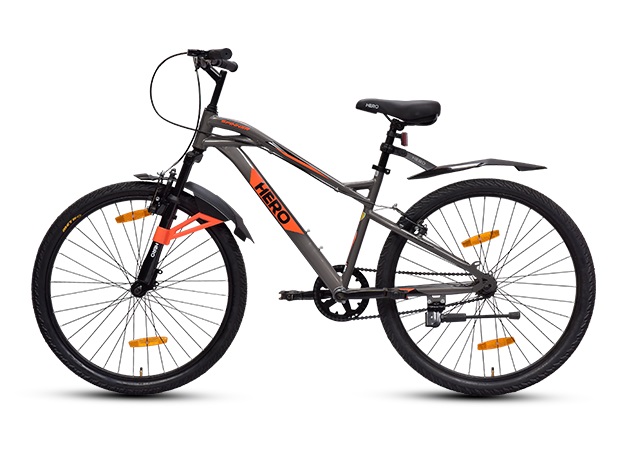How to Upgrade Your Mountain Bicycle for Better Performance

A mountain bicycle is built for rugged terrains, steep inclines, and off-road adventures. However, as you gain experience, you may notice areas where your ride could be improved. Upgrading your mountain bicycle can significantly enhance its performance, making it more efficient, comfortable, and capable of handling challenging trails. Whether you’re looking to improve speed, durability, or overall handling, the right modifications can make all the difference.
In this guide, we’ll explore essential upgrades to transform your mountain bicycle into a high-performance machine.
Why Upgrade Your Mountain Bicycle?
Upgrading your mountain bicycle can offer several benefits, including:
- Better Performance: Improved components result in smoother rides and better handling.
- Increased Durability: Stronger parts reduce wear and tear, extending the life of your bike.
- Enhanced Comfort: Suspension and ergonomic upgrades reduce fatigue and improve ride quality.
- Customization: Tailor your bicycle to your riding style and terrain preferences.
Essential Upgrades for Your MTB Bicycle
1. Upgrade Your Suspension System
The suspension system plays a crucial role in absorbing shocks and maintaining control on rough trails. If your mountain bike has a standard suspension fork, upgrading to a premium air or coil fork with adjustable settings can enhance performance. Rear shocks can also be improved for better absorption and stability.
Key Benefits:
- Better shock absorption on rough terrain.
- Improved handling and stability.
- Enhanced comfort for longer rides.
2. Improve Your Drivetrain
A high-quality drivetrain enhances pedaling efficiency, shifting precision, and overall speed. If your current setup is outdated, consider upgrading to a modern 1x or 2x drivetrain with a wide-range cassette.
Key Benefits:
- Smoother and more reliable shifting.
- Less maintenance compared to older setups.
- Better climbing and downhill performance.
3. Upgrade Your Braking System
Brakes are essential for safety and control, especially on steep descents. If your mountain bicycle still has basic mechanical disc brakes, consider switching to hydraulic disc brakes. They offer better stopping power, especially in wet and muddy conditions.
Key Benefits:
- Increased braking power and control.
- Improved responsiveness in all weather conditions.
- Reduced hand fatigue on long rides.
4. Invest in High-Performance Tires
Tires play a significant role in grip, speed, and overall ride comfort. Consider replacing your stock tires with high-quality tubeless tires that offer better traction, reduced rolling resistance, and fewer punctures.
Key Benefits:
- Improved traction on various terrains.
- Reduced risk of flats and punctures.
- Smoother and more efficient rolling.
5. Upgrade Your Wheels
Lightweight and durable wheels can improve your mountain bicycle’s overall performance. Upgrading to a stronger, tubeless-ready wheelset enhances ride quality and reduces rotational weight.
Key Benefits:
- Increased durability on tough trails.
- Better handling and acceleration.
- Reduced weight for easier climbs.
6. Enhance Your Cockpit (Handlebars, Stem, and Grips)
The cockpit of your MTB bicycle affects your comfort and control. Wider handlebars offer better leverage, while an adjustable stem allows for a more ergonomic riding position. Upgrading to ergonomic grips reduces hand fatigue.
Key Benefits:
- Improved handling and maneuverability.
- Reduced strain on wrists and shoulders.
- Better overall control on technical trails.
7. Upgrade Your Pedals
Stock pedals on mountain bicycles are often basic and inefficient. Switching to high-quality flat or clipless pedals enhances your pedaling efficiency and control.
Key Benefits:
- Better grip and foot stability.
- Improved power transfer.
- Reduced risk of slipping in wet conditions.
8. Improve Your Saddle for Better Comfort
A good saddle makes long rides more enjoyable. If you experience discomfort, consider upgrading to a saddle designed for mountain biking with better padding and ergonomic support.
Key Benefits:
- Increased comfort on long rides.
- Reduced strain on lower back and hips.
- Better support and weight distribution.
9. Install a Dropper Seatpost
A dropper seatpost allows you to adjust your saddle height on the go. This is particularly useful for switching between climbing and descending positions without stopping.
Key Benefits:
- Better maneuverability on technical trails.
- Increased control and stability on descents.
- Improved pedaling efficiency on climbs.
10. Upgrade Your Chain and Cassette
A worn-out chain and cassette reduce drivetrain efficiency. Replacing them with high-quality components ensures smoother shifting and less wear on other drivetrain parts.
Key Benefits:
- Smoother and more efficient pedaling.
- Extended lifespan of drivetrain components.
- Reduced risk of chain drops and skipping gears.
Upgrading your mountain bicycle can significantly improve its performance, comfort, and durability. From suspension enhancements to drivetrain upgrades, investing in quality components transforms your riding experience. Whether you’re navigating challenging trails or conquering steep climbs, the right upgrades help you maximize your MTB bicycle’s performance. Regular maintenance further ensures longevity and reliability, allowing you to enjoy a smooth and thrilling ride for years to come.





Leave Your Comment